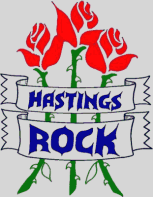
| About |
| Broadcasters |
| Free Trial |
| Purchase |
| News |
| Documentation |
| OAS Audio API |

|
OAS Playout Hastings Rock Trial Log - May 2002 |
|
Technical Overview
First up I'm not what you'd call an 'IT specialist', I just write the software...... but my thoughts on setting this lot up principally fell into two categories:
- how to make the thing as reliable as possible (outside my software that is!)
- what to do if/when it all falls apart around my ears
|
All the audio is held on a standard 40GIG IDE drive but located in removable carrier (see right). In case of failure there are two of these - not only can they be swapped over in case of failure but during the period leading up to the broadcast they can be easily moved around to the people who are ripping the CDs into MP3 files. OAS Playout itself runs under the Windows operating system which for those familiar with computers, the phrase 'blue screen of death' may sound familiar. To try and improve the stability I opted for one of the 'business' flavours of Windows (NT,2K or XP) over the more familiar 95/98 series. These tend to be more robust and also offer increased security preventing accidental deletion of key files. |

|
Hastings Rock have two studios - the live 'on air' one and a spare used for prepping of advertisements, jingles and to allow loading of new music onto the system throughout the broadcast. The Playout system itself principally consists of:
- PC with Playout software, twin independent audio output via 2 sound cards
- MP3 audio files
- audio database holding track information for all the available audio
Here's a rough outline of the system I came up with:

The two studio machines are essentially identical (bar the removable drive in the studio machine). The central database and music are held on the third machine - this is the "music server". All three machines are linked via small network. During normal use, the studio (and prep) machines all use the music server - both machines run the Playout software in pretty much an identical manner - the prep machine can also load new music onto the system. To prevent accidental deletion, all the music is marked "read only". Overnight any new music loaded onto the system is copied to the removable drive held in the main studio machine.
The decision to introduce the music server - purely dedicated to hosting the music may be overkill but I wanted to be sure the studio machine wouldn't be adversely affected by having to deal with new music being uploaded by the prep studio.
If it all goes pair shaped......
Since both studio machines are identical, should the main one fail it can be quickly replaced by the one in the prep studio. Should the music server fail, the studio machine can be switched over to use the 2nd removable disk held within it. A disk failure on the server can likewise be fixed relatively quickly by swapping over the one from the main studio machine.
Throughout this period of "brokeness", the fallback collection of CDs can be used.......
We're also playing sod's law here - hopefully there's enough redundancy here that it won't be tempted to explode in my face....
Sorting out the music
Something not to be glossed over here is the collation of the music into MP3 files and the cataloguing and indexing of all the tracks. I wasn't directly responsible for this but I know it was a real slog and (as I mention later) we were still sorting stuff out right up to and beyond the last minute.
MP3 files can be 'tagged' with information - that is an optional additional part of the file holding anything from basic track name and artist, album through to composer, beats per minute and what the weather was like when it was written. However this information is of course subject to the human touch - should that be 'Beatles', 'The Beatles' or even ' Beatles; The' ??
Some of the Hastings Rock music was "ripped" especially from the original CDs and so was carefully tagged and indexed along the way, however even more of it was already converted with no strict naming conventions applied. So not only did a vast number of CDs have to be ripped, all the other material had to be sorted out and named appropriately. The file details could then be imported into the playout database. This process also involved matching up the tracks required against the station's playlist.
